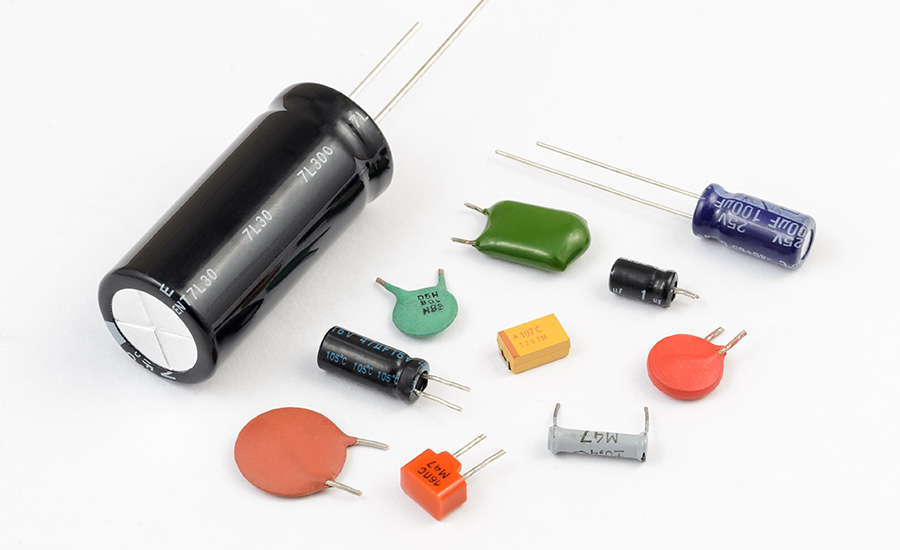Semiconductors are the line between conductors and insulators, allowing for manipulation of electrical currents in ways that have revolutionized technology.
They are crucial electronic components for various industries and the building blocks of our electronic world.
We will explain what semiconductors are, what are the most common types, and provide examples that explain their role in various industries.
What Are Semiconductors?
Semiconductors are materials with a conductivity level between insulators and conductors. They are not as conductive as metals but are more so than non-conductors, like ceramics.
Their ability to conduct electricity varies with temperature, light, voltage, or the introduction of impurities.
Semiconductors are essential to electronic devices, such as diodes, transistors, and integrated circuits. They can be manipulated to either conduct or insulate electricity, making them essential for a wide range of electronic applications.
What Are Semiconductors Used For?
Semiconductors are used for a wide range of applications due to their unique electrical properties that allow them to conduct electricity under certain conditions.
Semiconductors are the core elements of integrated circuits (ICs), including microprocessors and memory chips, which are vital for processing and storing information in various electronic devices.
Additionally, semiconductors play a crucial role in power management and conversion. They are used in devices that require efficient power management, such as solar cells in renewable energy systems and power supply units in electronic devices.
Types of Semiconductors
From the basic intrinsic semiconductors, pure and unaltered, to the strategically engineered extrinsic semiconductors, each type crucially influences electronic component behavior and efficiency. The most common types of semiconductors include:
Intrinsic Semiconductors
Intrinsic semiconductors are pure forms of semiconductor materials without any significant impurities. They have an equal number of conduction electrons and holes (electron vacancies that can conduct electricity).
Their conductivity is lower compared to extrinsic semiconductors and varies significantly with temperature. Examples of intrinsic semiconductors include pure silicon and germanium.
Silicon, for example, is the most used intrinsic semiconductor and forms the base for most integrated circuits and microchips.
Extrinsic Semiconductors
Extrinsic semiconductors are intrinsic semiconductors that have had impurities intentionally added to alter their electrical properties.
They are categorized into two types:
- N-type Semiconductors: N-type semiconductors have more conduction electrons than holes and they are created by doping an intrinsic semiconductor with elements that have more valence electrons. Common examples of N-type semiconductors include silicon doped with phosphorus, arsenic, or antimony.
- P-type Semiconductors: P-type semiconductors have more holes than electrons and they are made by doping with elements that have fewer valence electrons. Examples of P-type semiconductors include silicon doped with boron, gallium, or indium.

Exploring Semiconductor Applications Across Industries
Semiconductors are used in various industries, each leveraging their electrical properties for innovation, efficiency, and new opportunities.
The most common industries where semiconductors are used include:
Aerospace
In the aerospace industry, semiconductors are essential for their reliability and ability to function under extreme environmental conditions.
They are utilized in various systems such as flight control, satellite communications, and environmental monitoring, ensuring safety and efficiency in aerospace operations.
Automotive
In automotive applications, semiconductors play a critical role in enhancing vehicle safety, efficiency, and comfort.
They are key components in systems like advanced driver-assistance systems (ADAS), electronic control units (ECUs), and power management systems, contributing to advancements in collision detection, engine management, and in-vehicle infotainment.
Consumer Electronics
For consumer electronics, semiconductors are a foundation for many products.
They process and store information, making possible the operation of smartphones, laptops, gaming consoles, and various smart home devices, which are central to modern digital lifestyles.
Industrial
In the industrial sector, semiconductors are vital for improving automation, control, and operational safety.
They are used in automation control systems, power supplies, and industrial robotics, enhancing efficiency and safety in various industrial processes.
Medical
In the medical industry, semiconductors are key for precision, reliability, and miniaturization in medical devices.
They are employed in diagnostic equipment like MRI machines, patient monitoring systems such as blood glucose monitors, and life-supporting devices like pacemakers, playing a critical role in modern healthcare.
Military
In the military industry, semiconductors are crucial for the high-performance, rugged, and secure electronic systems required in defense operations.
They are used in secure communication devices, navigation systems, and surveillance equipment, ensuring operational efficiency and security in military technologies.
Renewable Energy
In renewable energy industries, semiconductors are important for energy conversion, management, and storage.
They are integral to the efficiency and functionality of renewable energy systems, including solar inverters in photovoltaic systems, controllers in wind turbines, and battery management systems for energy storage.
Telecommunications
In telecommunications, semiconductors enable high-speed processing and functionality in communication equipment.
They are utilized in mobile phone networks, broadband infrastructure, and fiber optic systems, facilitating global communication and connectivity.
Components That Are Used to Build Semiconductors
From the basic building blocks that store and process data to the specialized elements that manage power and execute control, each component contributes uniquely to the semiconductor’s functionality.
Components that are used to build semiconductors include:
- Microcontrollers: Microcontrollers are compact integrated circuits designed for specific operations in embedded systems, acting as the ‘brain’ in various electronic devices.
- Microprocessors: Microprocessors serve as the central processing unit (CPU) in computers, handling complex computations and data processing tasks.
- Memories: Memory components in semiconductors store data, with different types such as RAM and ROM playing vital roles in electronic devices.
- Diodes: Diodes are semiconductor devices that allow current to flow in one direction, commonly used for rectifying voltages and signal modulation.
- Transistors: Transistors are fundamental semiconductor components used for amplification and switching electronic signals.
- MOSFETs (Metal-Oxide-Semiconductor Field-Effect Transistors): MOSFETs are a type of transistor used for amplifying or switching electronic signals, prominent in digital and analog circuits.
- Thyristors: Thyristors are solid-state semiconductor devices with four layers of alternating N and P-type material, used for controlling high voltage and current.
- Logic: Logic components in semiconductors, such as logic gates, are essential for performing basic decision-making operations in electronic circuits.
- Analog and Power Management ICs: Analog ICs process real-world signals like sound, while power management ICs are essential for managing power requirements and efficiency in electronic systems.

AGS Devices: A Reliable Partner for Distribution of Semiconductors
At AGS Devices, we specialize in the distribution of top-quality semiconductors, following the highest standards of quality control.
Our process includes a detailed incoming inspection and extensive verification for both authenticity and performance. This meticulous approach guarantees that the semiconductors you receive are not just top-quality but also align with the high-performance demands of diverse applications.
We also distribute electronic components such as:
- Power Supply Distributors
- Optoelectronics
- Circuit Protection
- Interconnects
- Passive Components Electronics
- Electronic Testing Equipment
- Electromechanical Devices
Recognizing the vital role of semiconductors in electronic devices, we are committed to delivering components that are both reliable and robust, enhancing the functionality and efficiency of your projects.
As a prominent distributor in this specialized and evolving market, AGS Devices is dedicated to elevating the efficiency and dependability of your supply chain, ensuring that your needs for high-quality semiconductors are met with precision and expertise.
FAQs About Semiconductors
If you still have questions about semiconductors here are some additional answers you might find useful.
Why are semiconductors important?
Semiconductors are the foundation of modern electronics. They enable the control of electrical currents, essential for devices like computers, smartphones, and medical equipment, influencing nearly every aspect of modern life and technology.
How does a semiconductor work?
Semiconductors work by controlling the flow of electrical current. They can conduct electricity under certain conditions, which is manipulated through doping and the application of electrical fields, enabling the creation of electronic devices.
What is the difference between a chip and a semiconductor?
The difference between a chip and a semiconductor is in their scale and function.
A semiconductor is a material, typically silicon, with specific electrical properties that allow it to conduct electricity under certain conditions. It forms the base for various electronic components.
A chip, or a microchip, is a small piece of semiconductor material with an integrated circuit etched onto it. This integrated circuit is designed to perform electronic functions, such as processing data in computers or smartphones.
Does GPU use semiconductors?
Yes, GPUs (Graphics Processing Units) do use semiconductors. The core of a GPU is built on a semiconductor chip, typically made of silicon. This chip contains millions of transistors that process data to render images, videos, and animations.
The semiconductor technology in GPUs enables them to perform complex calculations efficiently, making them essential for graphics rendering, video processing, and increasingly, for AI and machine learning tasks.
